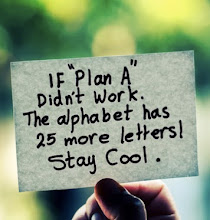
What is Dragon's Eye you may ask? Great question! Dwayne is holding one in the picture to the left. It is a very interesting Chinese fruit. It has a very tough skin that you have to pierce and then peel away. It has a very big, shiny, black pit in the center of an opaque white fruit. When peeled, it really does look like an eye. This fruit was part of the array provided at our breakfast. It seems somewhat tasteless, but as Dwayne said "I'm immersed!"
Our first business visit this morning was to the Lenovo plant where they make desktops,

laptops, and handheld computers. We were hosted by Ms. Chrietina Hua, Director of Production Management at the plant. Lenovo is a 24 year old computer manufacturer which has been focused primarily on the Chinese domestic market. They do also focus on developing countries such as Russia, Brazil, and India. The company was founded in 1984 with 11 researchers and US$25,000. Today they have more than 23,000 employees and revenues of more than US$16 billion. Lenovo currently has the #1 computer market share in China with all other competitors coming in at less than 10% each. Ms.

Hua noted that Lenovo has outpaced the market for the last 11 quarters. Lenovo was also the first ever Chinese Olympic Partner. They joined such world-class brands as VISA, Kodak, and McDonalds. The sponsorship was the kickoff of a multi-year marketing plan to promote the lenovo brand locally. The staff at Lenovo was kind enough to give us a tour of their factory. We put on our white coats, hats, and shoe covers and headed off to view assembly of computers, learn about part of their performance monitoring system, and their corporate social responsibility activities. By the way, we were not allowed to take any pictures inside the plant. The staff at Lenovo took these for us and put them on my laptop before we left the plant. Thank you!
Our second trip was to Shanghai GM, a 50/50 joint venture between GM and Shanghai automotive. The SGM staff first showed us a model of the plant and the we were allowed in their showroom. In the pictures below you can see Raquel, Patrick, Manvel, and Shontrai near one of the plant's products. In the second picture, you can see Prof. Obi pointing to the sticker price of that same vehicle. Note that the exchange rate is about 6.8 RMB to the dollar. Calculate that out in dollars!


Again, we were not allowed to take any photos inside the plant itself. Once inside the plant we were surprised to find that the assembly line was down - no employees and a still line. Our host said it was "between shifts" and that they would be back soon. We tried to walk slowly and ask a lot of questions but we left disappointed not to see the plant in action. In any case, at least it was relatively quiet and we could learn about their manufacturing process.
After a long bus ride back to the hotel in Shanghai rush hour, everyone went their own way. I am sure some took a nap, some worked out, and many went to explore Nanjing Street Pedestrian Walkway and also the Bund.
Here are a few other fun things that I learned from Jenny during our bus travels.
- The Chinese characters that make up the word Coca Cola mean "Delicious taste, delicious smile".
- According to Confucius, a wise man is "one who understands others."
- In the whole thousands of years of Chinese history, there has only been one empress who was the leader of the dynasty (rather than just the wife of the emperor). Her name was Tzu Hsi. She was sometimes referred to as the Dragon Empress.
- There is an office building in Shanghai called "The Opener" because at the top of this very tall building it looks like a bottle opener. It has that same rectangular shape cut out.
It is hard to believe that we've been here almost a week. Almost everyone is over their jet lag and we are all wishing the trip was longer. There is SO much to see and learn about in this facinating country

 Although most everyone headed back to the US today - and will try to recover enough to go to work on Monday - three of us stayed in Shanghai for one extra day. Pat and I are leaving tomorrow, Monday, and Tricia is leaving on Tuesday.
Although most everyone headed back to the US today - and will try to recover enough to go to work on Monday - three of us stayed in Shanghai for one extra day. Pat and I are leaving tomorrow, Monday, and Tricia is leaving on Tuesday. 











 Why, oh why, must all good things come to an end? It seems like we have just arrived and we are getting ready to leave tomorrow. There is SO much to see and do. This trip has only whet our appetites for this huge, wonderful country.
Why, oh why, must all good things come to an end? It seems like we have just arrived and we are getting ready to leave tomorrow. There is SO much to see and do. This trip has only whet our appetites for this huge, wonderful country.


































